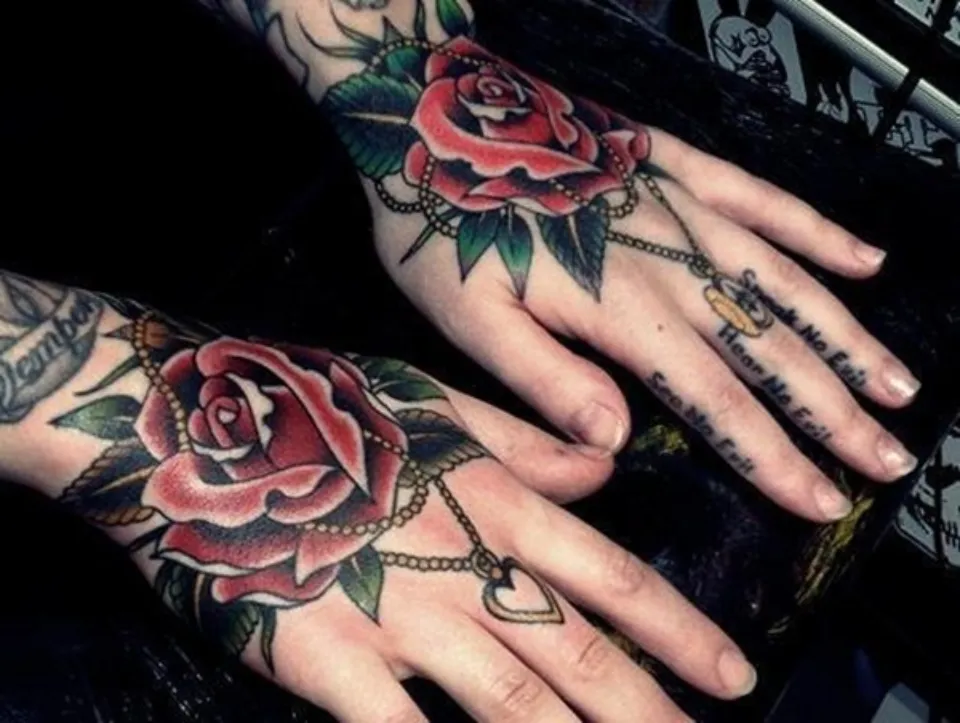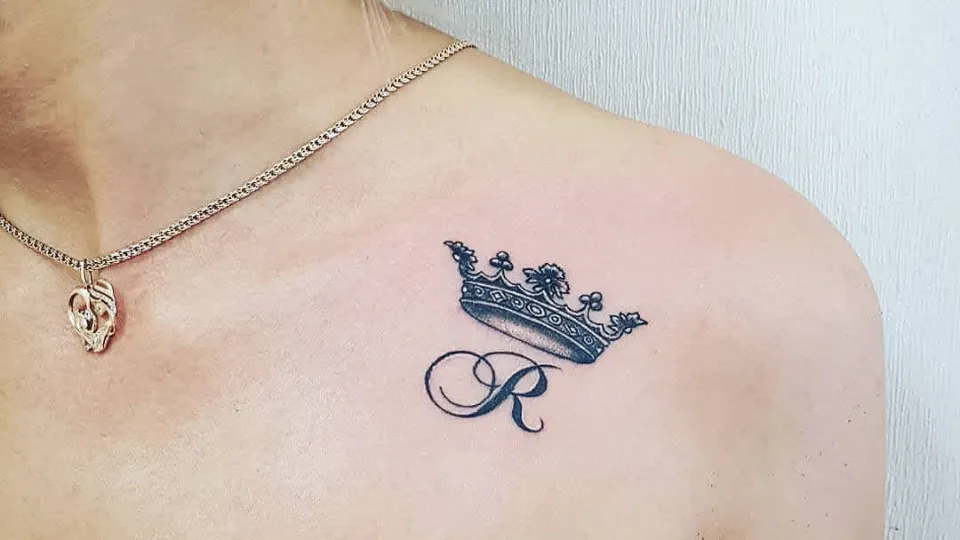If you’re into alternative styles, then you’ve probably noticed the growing popularity of the Medusa Ashley piercing (also known as the philtrum piercing). For all the information you need to know before getting a medusa piercing, continue reading.
An alluring and unique piercing, the Medusa look offers a modern lip piercing that invites gorgeous charms and gemstones for an unmatched aesthetic.
You’re curious, but aren’t sure you’re ready to commit. Be at ease; we spoke to the professionals so that you would know what to anticipate.
What is Medusa Ashley Piercing?
The Medusa piercing is classified as a lip piercing, but it actually appears above the lip itself, just below the septum. Many people who select this piercing combine it with other designs, such as a vertical labret piercing, to produce a seductive cluster of lip piercing jewelry.
Like with any piercing, proper aftercare procedures must be followed, healing times must be understood, and any possible health risks must be understood. You’ve arrived at the ideal location whether you’re considering a Medusa or are merely interested in learning more about the piercing procedure! Here is a brief and simple guide to help you begin your Medusa piercing journey.
Read More:
How Much Does the Medusa Piercing Hurt?
Since the lips and the area around the lips have more nerve endings than other body parts, you can expect a bit of pain during the piercing process, but it will be quick. Since the Medusa consists of only one puncture that your piercer will complete in one fluid motion, the pinch will last only a moment followed by some throbbing associated with any piercing.

Swelling is common at the Medusa piercing. Not to worry; this is typical of all lip piercings. If your Medusa piercing swells, pay attention to the jewelry. You’ll need to ask your piercer to replace the jewelry with a larger size if it begins to press against the skin. You can switch to a smaller jewelry size once the swelling has diminished (after a few days).
Medusa Piercing Healing and Aftercare
Depending on your anatomy, your body’s immune system, and how well you take care of your piercing during healing, the Medusa will take 2 – 3 months to fully heal. It’s important to remember that these are the minimum healing times and that they may vary depending on how quickly your body can recover.
So, before switching out the jewelry and discontinuing aftercare procedures, make sure to visit your piercer and have them confirm that your Medusa piercing has fully healed. Failure to do so could cause harm that delays healing, traumatizes you, or even leads to the loss of the piercing.
Medusa Piercing Aftercare Rules
Cleaning your healing Medusa piercing with a piercing aftercare saline solution two to three times a day, as directed by your piercer, is all that is necessary to keep it clean. When choosing an aftercare solution, make sure that you choose one that only contains salt and water. Some post-piercing care products contain additives, such as tea tree oil, that are meant to speed up healing but actually slow it down.
Beyond keeping your Medusa clean, there are a few more things that you need to keep in mind to keep your piercing safe until it fully heals.
- Monitoring swelling is important. The first few days after piercing, the Medusa piercing frequently swells. You should watch your jewelry as it swells. Too-small jewelry can press against the piercing and traumatize the piercing site. You can (and should) change to a smaller jewelry item once the swelling has subsided after a few days.
- Don’t handle your jewelry more than is necessary. The nearby skin may become inflamed if you tug or twist the jewelry. Instead of picking at crusties or twisting the jewelry to remove it, dab the area with a clean paper towel dipped in saline solution until it’s clean, being careful not to move the piercing jewelry.
- Dry the piercing off. Don’t take baths, and when you shower, try to keep the piercing out of the water as much as possible. If you want to let the piercing air dry, use your hair dryer’s cool setting, or gently dab it with a paper towel.
- Keep cosmetics away from the piercing. Makeup can easily enter a healing piercing and cause irritation, pustules, and infections. As your piercing heals, keep makeup and other facial products completely away from the piercing site.
- Take care when brushing your teeth. When healing any lip piercing, oral hygiene is crucial, but it also necessitates special attention. Consider brushing your teeth after every meal, and be extra careful when brushing near your piercing so that you don’t tug at the jewelry. It will irritate your piercing if you use mouthwash that contains alcohol. Instead, swish a salt-water solution.
- Watch what you eat. Acidic and spicy foods can irritate the piercing and result in things like piercing bumps in addition to being painful to consume. When you first get the Medusa piercing, choose soft foods that don’t require chewing while you adjust to the new jewelry.
Side Effects of Piercing
- Swelling: It’s likely that you’ll experience some swelling, but it should go away in a few days. “Philtrum piercings tend to experience a decent amount of localized swelling,” says Pearce, with the right aftercare, it should go away on its own.
- Crusting: “Philtrum piercings often create discharge during the healing stages,” says Pearce. It’s common for there to be crust around the piercing as a result of this. “Don’t pick at it or yank anything out. Instead, you can utilize a sterile saline spray to naturally encourage the debris to come off,” says Pearce.
- Gum erosion and tooth damage: This is a frequently disregarded side effect of poorly performed mouth piercings. “If a Philtrum piercing isn’t done correctly, the jewelry will likely cause oral trauma and over time can result in irreversible damage,” says Pearce. The good news? “The possible negative effects that can be linked to oral piercings should be minimized by proper and strategic placement by a skilled piercer.” The bad? Neither “gums nor teeth are regenerative, so damage that’s done can rarely be reversed and not easily, without pain, or cost-efficiently.
Medusa Piercing Jewelry and Jewelry Materials
After discussing the frightening aspects of this adorably cute piercing, it’s time to discuss the jewelry, which is also the most enjoyable aspect.
According to the Association of Piercing Professionals, there are only a handful of suitable body jewelry materials available despite the abundance of available options. (Here is the complete list.) We advise using titanium for entry-level jewelry. Titanium costs little, has few alloys, and won’t irritate your skin. Starter jewelry, however, should only be worn for the first few days because it will be a little oversized to account for swelling.
You can switch to a gorgeous 14k gold or platinum piece once the swelling has subsided. These two materials make beautiful jewelry and are strong enough to last a lifetime.
By far, the most popular jewelry seen in a Medusa is a lip piercing stud. A lip stud is made up of a barbell, a flat disc for the back, and a bead or charm fastened to the front. To prevent snags or tears, you should choose jewelry that is internally threaded.
Most Medusa piercings require a 14G or 16G lip stud. Make sure the lip stud doesn’t extend too far or pinch too tightly when selecting the barbell’s length. The skin can become embedded in jewelry that is too small, and larger jewelry may scrape against your gums and cause your gum line to recede.
How to Change Medusa Piercing Jewelry
Because the piercing is placed perpendicularly to the skin, changing your Medusa piercing jewelry isn’t as hard as some other piercings.
1. By loosening the jewelry’s back and pulling the stud out of the piercing from the front, you can gently remove any existing jewelry that is in place.
2. Unscrew the internally threaded back of the new jewelry.
3. Put the prong of the Medusa lip piercing stud gently into the piercing. Keep the jewelry in place by not moving it around too much. Even after complete healing, the piercing could be damaged by vigorous movement.
4. Attach the back by tightening the prong. Make sure that you don’t tighten too much so that you don’t damage the threading. It should be firm but not too tight.
Cost of Medusa Ashley Piercing
When choosing a piercing studio, the price can be a clear indication of the jewelry quality and professional expertise you’re about to subject your body to. The jewelry you choose will always determine the final cost at our studio (and most others).
Since we primarily use genuine diamonds that have been ethically sourced and solid gold, we are regarded as a fine jewelry gallery. Our most affordable item has a starting price of roughly $150, but depending on your taste in jewelry, it could easily cost four figures or more.
Medusa Piercing Variations
We love body jewelry for its ability to help us show our individual personalities, so we love when we can take advantage of unique takes on standard piercings!
Two vertical punctures beneath the septum make up the double Medusa piercing. Stacking two delicate lip studs on top of one another in this style looks adorable. Given that this style requires two piercings, it’s frequently advised by piercers that you have each one done separately to minimize discomfort and promote faster healing.
The Medusa piercing also pairs well with a septum piercing and vertical labret piercings due to its proximity.
You May Also Like:
FAQs
How Painful is a Medusa Ashley Piercing?
Yes, but because everyone has a different threshold for pain, it’s difficult to say exactly how much. The area around your philtrum is packed with nerve endings, so it’s bound to hurt more than, say, your earlobes.
Can I Brush My Teeth After An Ashley Piercing?
Bring a toothbrush around with you & regularly brush your teeth. Wearing jewelry that is too tight is not recommended.




